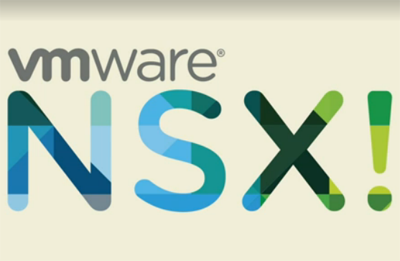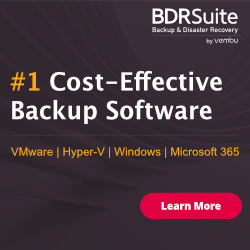
We are really excited to see a new dot release for VMware NSX with version 6.2, Mainly due to the idea of stretching the logical configuration across multiple vCenter Servers (realistically, sites) using Cross vCenter NSX. This is where logical switches, distributed logical routers, and distributed firewalls can be deployed across multiple vCenters. Historically, NSX designs were for multiple sites in which applications contained workloads that span multiple vCenters at multiple physical locations.
For example: Production and Stage might run at the primary site, while Test and Development lives in the secondary site. But we still need to allow Production to failover to the secondary site for a disaster – meaning all of the network and security features had to exist on both sides. We can use scripts to replicate the configuration, but not ideal use case. The largest road block was crafting a consistent firewall policy across multiple vCenters. Now that rules can be marked as Universal and get replicated across multiple NSX managers, the pain of duplicating policy is assuaged.
You might get a chuckle, but the other feature that I’m stoked about is having a Centralized CLI. It is zero fun having to hunt down logical details across NSX Controllers and Edge devices. The new CLI is centralized, which allows you to quickly access and compare information from multiple sources. The central CLI provides information about logical switches, logical routers, distributed firewall and edges. The NSX 6.2 for vSphere release contains many new thins including the API has changed.
NSX vSphere 6.2 includes the following new and changed features:
Cross vCenter Networking and Security
- NSX 6.2 with vSphere 6.0 supports Cross vCenter NSXwhere logical switches (LS), distributed logical routers (DLR) and distributed firewalls (DFW) can be deployed across multiple vCenters, thereby enabling logical networking and security for applications with workloads (VMs) that span multiple vCenters or multiple physical locations.
- Consistent firewall policy across multiple vCenters: Firewall Rule Sections in NSX can now be marked as “Universal” whereby the rules defined in these sections get replicated across multiple NSX managers. This simplifies the workflows involving defining consistent firewall policy spanning multiple NSX installations
- Cross vCenter vMotion with DFW: Virtual Machines that have policies defined in the “Universal” sections can be moved across hosts that belong to different vCenters with consistent security policy enforcement.
- Universal Security Groups: Security Groups in NSX 6.2 that are based on IP Address, IP Set, MAC Address and MAC Set can now be used in Universal rules whereby the groups and group memberships are synced up across multiple NSX managers. This improves the consistency in object group definitions across multiple NSX managers, and enables consistent policy enforcement
- Universal Logical Switch (ULS): This new functionality introduced in NSX 6.2 as a part of Cross vCenter NSX allows creation of logical switches that can span multiple vCenters, allowing the network administrator to create a contiguous L2 domain for an application or tenant.
- Universal Distributed Logical Router (UDLR): This new functionality introduced in NSX 6.2 as a part of Cross vCenter NSX allows creation of distributed logical routers that can span multiple vCenters. The universal distributed logical routers enable routing across the universal logical switches described earlier. In addition, NSX UDLR is capable of localized north-south routing based on the physical location of the workloads.
Operations and Troubleshooting Enhancements
- New traceflow troubleshooting tool: Traceflow is a troubleshooting tool that helps identify if the problem is in the virtual or physical network. It provides the ability to trace a packet from source to destination and helps observe how that packet passes through the various network functions in the virtual network.
- Flow monitoring and IPFIX separation: In NSX 6.1.x, NSX supported IPFIX reporting, but IPFIX reporting could be enabled only if flow reporting to NSX Manager was also enabled. Starting in NSX 6.2.0, these features are decoupled. In NSX 6.2.0 and later, you can enable IPFIX independent of flow monitoring on NSX Manager.
- New CLI monitoring and troubleshooting commands in 6.2: See theknowledge base article for more information.
- Central CLI: Central CLI reduces troubleshooting time for distributed network functions. Commands are run from the command line on NSX Manager and retrieve information from controllers, hosts, and the NSX Manager. This allows you to quickly access and compare information from multiple sources. The central CLI provides information about logical switches, logical routers, distributed firewall and edges.
- CLI ping command adds configurable packet size and do-not-fragment flag: Starting in NSX 6.2.0, the NSX CLI ‘ping’ command offers options to specify the data packet size (not including the ICMP header) and to set the do-not-fragment flag. See theNSX CLI Reference for details.
- Show health of the communication channels: NSX 6.2.0 adds the ability to monitor communication channel health. The channel health status between NSX Manager and the firewall agent, between NSX Manager and the control plane agent, and between host and the NSX Controller can be seen from the NSX Manager UI. In addition, this feature detects when configuration messages from the NSX Manager have been lost before being applied to a host, and it instructs the host to reload its NSX configuration when such message failures occur.
- Standalone Edge L2 VPN client CLI: Prior to NSX 6.2, a standalone NSX Edge L2 VPN client could be configured only through OVF parameters. Commands specific to standalone NSX Edge have been added to allow configuration using the command line interface. The OVF is now used for initial configuration only.
Logical Networking and Routing
- L2 Bridging Interoperability with Distributed Logical Router: With VMware NSX for vSphere 6.2, L2 bridging can now participate in distributed logical routing. The VXLAN network to which the bridge instance is connected, will be used to connect the routing instance and the bridge instance together.
- Support of /31 prefixes on ESG and DLR interfaces per RFC 3021.
- Enhanced support of relayed DHCP request on the ESG DHCP server.
- Ability to keep VLAN tags over VXLAN.
- Exact Match for redistribution filters: The redistribution filter has same matching algorithm as ACL, so exact prefix match by default (except if le or ge options are used).
- Support of administrative distance for static route.
- Ability to Enable, relax, or disable check per interface on Edge.
- Display AS path in CLI commandshow ip bgp
- HA interface exclusionfrom redistribution into routing protocols on the DLR control VM.
- Distributed logical router (DLR) force-sync avoids data loss for east-west routing traffic across the DLR.North-south routing and bridging may continue experience an interruption.
- View active edge in HA pair: In the NSX 6.2 web client, you can find out if an NSX Edge appliance is the active or backup in an HA pair.
- REST API supports reverse path filter (rp_filter) on Edge: Using the system control REST API, rp_filter sysctl can be configured through UI, and is also exposed through REST API for vNIC interfaces and sub-interfaces. See theNSX API documentation for more information.
- Behavior of the IP prefixGE and IP prefix LE BGP route filters: In NSX 6.2, the following enhancements have been made to BGP route filters:
- LE / GE keywords not allowed: For the null route network address (defined as ANY or in CIDR format 0.0.0.0/0), less-than-or-equal-to (LE) and greater-than-or-equal-to (GE) keywords are no longer allowed. In previous releases, these keywords were allowed.
- LE and GE values in the range 0-7 are now treated as valid. In previous releases, this range was not valid.
- For a given route prefix, you can no longer specify a GE value that is greater than the specified LE value.
Networking and Edge Services
- The management interface of the DLR has been renamed to HA interface. This has been done to highlight the fact that the HA keepalives travel through this interface and that interruptions in traffic on this interface can result in a split-brain condition.
- Load balancer health monitoring improvements: Delivers granular health monitoring, that reports information on failure, keeps track of last health check and status change, and reports failure reasons.
- Support VIP and pool port range: Enables load balancer support for applications that require a range of ports.
- Increased maximum number of virtual IP addresses (VIPs): VIP support rises to 1024.
Security Service Enhancements
- New IP address discovery mechanisms for VMs: Authoritative enforcement of security policies based on VM names or other vCenter-based attributes requires that NSX know the IP address of the VM. In NSX 6.1 and earlier, IP address discovery for each VM relied on the presence of VMware Tools (vmtools) on that VM or the manual authorization of the IP address for that VM. NSX 6.2 introduces the option to discover the VM’s IP address using DHCP snooping or ARP snooping. These new discovery mechanisms enable NSX to enforce IP address-based security rules on VMs that do not have VMware Tools installed.
Solution Interoperability
- Support for vSphere 6.0 Platform Services Controller topologies: NSX now supports external Platform Services Controllers (PSC), in addition to the already supported embedded PSC configurations.
- Support for vRealize Orchestrator Plug-in for NSX 1.0.2: With NSX 6.2 release, NSX-vRO plug-in v1.0.2 is introduced in vRealize Automation (vRA).
Source: VMware NSX 6.2 Release Notes


